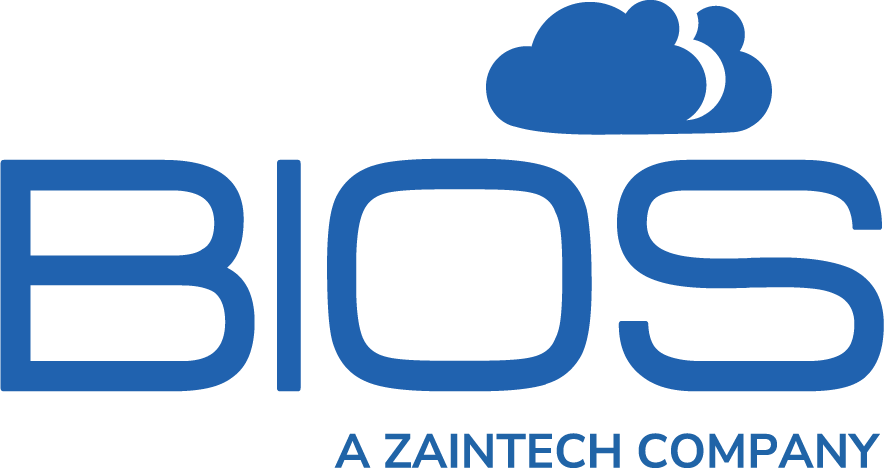Why do you need cloud based Disaster Recovery?
The number one reason is you can't afford downtime. The headlines out there are filled with crazy stories, although it might not happen to you at that scale, any outage can cause IT admins and CIO's to lie awake at night wondering if they are protected well. Whether you call it IT resilience, data protection, business continuity the reality is you cannot afford downtime due to some unforeseen issue. Hence, it’s not a luxury but a necessity in today’s world. It is critical to be always available for internal and external customers. You know that if you are not able to be reached by a customer they will go somewhere else and find your competitor or even worse your internal customers makes resort to shadow IT that is outside your purview which can cause a whole lot of other issues. When you listen to the news, natural disasters get the biggest headline but normally that is not what is happening in your IT environment. The reality is most of the times you will experience outage because of hardware faults, software faults, malicious ransomware, malicious users or accidents by users.
Challenge is IT budgets haven’t been increased to accommodate disaster recovery although it is mission critical. Every single budget cycle, usually the first thing that gets cut is DR. You hope for one more year that nothing bad is going to happen and no matter how many times you talk to stakeholders about how important DR is, something will cause it to be blocked but at the end of the day IT will be looked at if there is an actual issue.
The Cost of Downtime
It is difficult to put a cost on downtime, it could be anything from your ordering system to your email to your presence on the web, and although all of that has a tangible quantity that you can put a number to, it can fluctuate for every organization and situation.
Gartner talks about moving to the cloud to reduce your business costs and this also means DR and while they say approximately 5600 USD for every minute of unplanned downtime, the reality of it is, it could really vary but there are lots of things at stake which are the intangible costs of downtime.
What’s the perception of your customers if they can’t reach their data? Or they can’t reach their application? Another one is loyalty - customer loyalty, internal loyalty. In today's day and age it’s really easy to find somebody else. And to re acquire these customer or replace them the costs are going to astronomical and lastly you have confidence - are your customer’s confident that you are able to deliver your promise and the SLA's? As the confidence goes down, customer retention goes down \
*Gartner Report, "Three moves for CIO's to lower business costs with Cloud"
The numbers are really scary about how disasters can make or break an organization. Everybody says it’s not going to happen to me but we've done various studies and talk to customers throughout the years and almost half of the customers protect less than half of their virtual machines with a DR plan and of course that number is skewed because everyone thinks that all their applications are tier 1 and high priority and obviously IT know which applications are really needed to run the business but things that aren’t protected can also have a big impact on the business as a whole.
"Nearly 50% of organizations protect less than half of their VM's with a DR plan” - 2018 Veeam survey
What is more scary is that "85% of decision makers are not confident in their current solution's ability to recover VMs" Veeam 2017 availability report.
“In the last 12 months, 77% of organizations reported experiencing at least one outage" (i.e. any interruption to normal levels of IT-related service) - Spice works study 2018
This could be anything from network outage from the ISP to a database server, software issue to someone accidentally deleting something but the reality is its not abnormal thing to have an outage or some sort of IT disruption and we are not talking about earthquakes, floods.
Back up aren’t enough
Now, you can always re-install applications, you can always get new hardware, you can even run your internet lines but the reality is your business is based around your data and if you don’t have that data you can’t conduct business. We think we have our backups. Backs up are not the same as IT resilience or DR. One of the key disadvantages of a backup is especially in a situation where you need to recover quickly is that backups are prone to unacceptable recovery point objectives, If you are backing up only every night and something happens an hour before the backup, that’s an entire’ s day worth of data lost. In additional backups can have painful recovery time objective – if it takes you 17 hours to recover your DC from tapes in addition to however long your downtime, that could be a considerable amount of time. Local backups can also be a target by malicious software especially some new complex ransomware attackers who know where to find back up files whether that is application, database etc Back up needs something to restore to. If the power in your building is out a backup is not going to help, you have to wait until you get some more equipment. Now this does not mean you do not needs backups. Backups are important when it comes to data protection, long term archival, security compliance but a full IT resilience plan means both back up and disaster recovery.
Let’s take an example
RTO (Recovery Time Objective) – How long will it take to get my data to back up?
RPO (Recovery Point Objective) – How much data will I lose once recovered?
Your systems are backed up every night at 7 pm. You are also running a DR system with continuous replication. Disaster strikes. At 6 am a power outage hits the building, taking down your data center. How do you recover?
DRaaS Scenario
• At 6:01 am you press fail over on the DR solution
• Within 5 minutes, at 6:05 am, the systems are back up in the cloud. The recovery time is 4 minutes
• The data replicated to the recovery site is consistent up until 5:58 am – just before the power went out. So your recovery point objective is 2 minutes
Back up Scenario
• At 6:01 am you go find your back ups
• Then you spend the next few hours finding, fixing and re-starting your infrastructure (assuming your power is back)
• At 5:00pm, a few of your major systems are online. Your RTO on those systems are 11 hours.
• The systems are last restored to the last back up time – which is 7pm yesterday so your RPO on those few systems is 22 hours.
• The remaining systems take longer, and thus have a much longer RTO and RPOs
Cloud based DR makes your job easier
We’ve heard over the years various reasons why they don’t have disaster recovery – we don’t have the manpower, skills, space, budget but the cloud has come along and its agile, scalable, high performance, highly adaptable, cost effective means to put all those arguments to rest.
When you think of traditional DR and purchasing a secondary DC and duplicate hardware and replication and licenses etc and at some point you also need to take in account additional head count help run all of that. But when you move to cloud based DR, all of a sudden your IT resources are not stretched and don’t have to think and worry about DR and business continuity because that’s our expertise and we have help build that sense of security
We’ve often heard that organizations build secondary data center because they don’t trust the cloud or either they have some security and compliance solutions in place which cloud doesn’t provide. But in a proper cloud environment it comes with expert security and compliance built into the platform. If done properly, the cloud can be as secure or even more secure than your onsite environment.
Testing and fail-over was a very complex process. Virtualization came along and not only revolutionized infrastructure and applications but also DR because a VM is an entity that can be replicated somewhere else and then be brought online. All of a sudden you can create complete isolated test environments with your applications and make sure they run. And what’s great about this is, you no longer impact your production environment. No more 3 days shut down to test your DR plan. Now all of sudden on a Tuesday night before you go home you can click a button, go home, have some dinner, log in and check that the test was successful and know that you have confidence in your DR solutions' ability to recover on moment’s notice and run the way you want it to. Another benefit is if something breaks, or something is not working, you have the time to fix it now so that you have confidence of when you actually have to run it. And then because its in the cloud in the case you really have to run your fail-over, its as easy as clicking a button or calling us.
Orchestration and automation has always been a pain point when it comes to DR again because IT resources don’t have the time or the expertise. If you ask many IT admins, what order do all VM’s in their entire infrastructure need to come up to make sure every service runs, it’s a pretty daunting task. There is always some application dependency that hasn’t been thought about or there are multiple organizations, using different pieces of technology that IT isn’t familiar with. With the ability to orchestrate and automate, now you have complete control over what comes up when and how and because of the tassel free testing you can test it, make sure things come up, bring in the stake holders, have them test their applications, have them sign of and get all the reports you need.
“Self-service DRaaS supports greater control by end users over the server image replication, fail-over and fail-back procedures” – Gartner MQ for DRaaS, Ron Blair, Mark Jaggers, 12 July 2018.
Gartner talks about self-service DR as a Service and how it gives customers more control. The best solution is something that is self-service but yet at the same time you can call up a cloud provider and say "hey I need help with this". Whether you push the button or we do, it doesn’t matter but you are with us every step of the way to bring your environment back up online
DIY or CSP
One of the biggest dilemma with DR or IT resilience is that if you want to DIY or go to the cloud, whose going to pay for it, how much does it cost. Most of the times these conversations end here. When you think of what it takes to make your own DC, whether you are talking about a DC you already have or go find a location. You are now looking at various things like power, cooling, racks, server, storage, networking, cabling, security, connectivity, software, staff etc. and not to mention the time to configure, test it, who is going to maintain it, how much do service contracts cost, the cost of upgrades, and it all starts to add up and this is why most of the DR solutions fail during the intial budget stage.
But this is in the past. Now you have trusted cloud service provider who is there to take care of all of these problems. From an initial consultation to concierge on-boarding and support, the idea of cloud service provider is to be your secondary site for DR. It is to work hand in hand with your IT staff so that all of these things don’t become a barrier for protecting your data, and when you think about it the service provider’s entire job is around making sure your DR solution is successful.
Why BIOS?
We are the only company from the Middle East to be named in the DRaaS Magic Quadrant for 2 consecutive years by Gartner. Apart from that here are some more reasons:
-
- Built on a Cisco Audited Infrastructure
- Based in the UAE for low Latency
- Run from the best Data centers (Equinix)
- Fully Managed by in-country NOC
- Highly Secure Cisco ACI Architecture
- Management Self-Service Portal
- Application Fail-over and Roll back
- Recover within 15 minutes
- Recovery point of Seconds
- 24x7x365 business focused SLA Support
- One Click testing and fail-over
- On boarded in days!
If you would like to discuss your requirement, get in touch with us here today!

